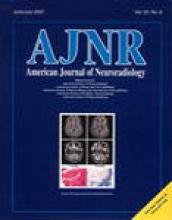Dr. Joseph Ransohoff, a great neurosurgeon and teacher of neurosurgery, and an honorary member of the ASNR died on January 30 at his home in Tampa, Florida., where he had moved after retiring from New York University (NYU) Medical Center. He was 85 years old.
Ransohoff was a strong supporter of neuroradiology in its early years. “What I remember most about Joe was his tremendous spirit and support of neuroradiology,” said Eric Russell, Past President of the ASNR, who had trained at NYU. “Joe was an inspiration for all of us. I suspect that many recently trained neuroradiologists know nothing about the importance that this one neurosurgeon had for neuroradiology”, said Allan Fox, Professor of Radiology at the University of Ontario.
A native of Cincinnati, Ohio, Ransohoff earned his undergraduate degree from Harvard University and, in 1941, earned his medical degree from the University of Chicago. He was drafted into the U.S. Army during his 3rd year of a general surgery residency at Cincinnati General Hospital. After 2 years of military service, Ransohoff completed his neurology and neurosurgery residency at Montefiore Hospital in New York City in 1949. He taught at Columbia University and practiced at New York Neurologic Institute of Presbyterian Hospital until moving to NYU in 1961.
At Presbyterian Hospital, in the 1950s, angiograms were performed by neurosurgeons and neurologists, not by radiologists. Dr. Ransohoff asked a neuroradiologist to perform all the procedures on his patients, saying, “If you do them all, you'll get better than anyone”. From that time on, neuroradiologists did the procedures, and trainees wouldn't take a job unless they controlled and did the angiograms. Today not many remember the opposition of neurology and neurosurgery to neuroradiologists doing the invasive studies. During three decades as chairman of NYU's Department of Neurosurgery, Ransohoff established one of the country's premier neurosurgical programs. “He helped build our reputation as one of the country's premier neurological centers,” said Dr. Patrick J. Kelly, his successor as chairman of the Department of Neurosurgery at NYU and holder of the Joseph Ransohoff Professorship.
When Dr. Ransohoff was recruited to be Chairman of Neurosurgery at NYU, one of his demands was that they fund a position for a neuroradiologist whom he would help recruit. This was most unusual in that era when most neurosurgeons performed and interpreted their own procedures. In 1963, he supported a National Institutes of Health (NIH) Neuroradiology training grant that stipulated that neuroradiologists do all the procedures! NIH was providing funds to establish neuroradiology training programs, and already there were many funded programs at institutions where neuroradiologists were doing procedures—but no one said so. Neuroradiologists doing angiograms? This was such a shock to NIH that they rescheduled the site visit and expanded the committee to include two well-known neurosurgeons and two well-known neurologists. They all wanted to know why the neuroradiologist should do the procedures. Before anyone else could answer, Ransohoff, who was already a famous neurosurgeon said, “There is only one reason; they can do it better!” And that settled it. Subsequently, when the grant was short of construction funds for a fellows office, he gave $2000.00 from his own pocket to build one.
Circa 1968, Ransohoff had started embolization of inoperable brain arteriovenous malformations (AVMs). He would select the patients and A. Imparato, a vascular surgeon, would do a surgical cut down on the carotid artery, place a cannula, and instill silastic pellets. Circa 1970, I told Joe that I could do embolizations by catheter better than the two surgeons could by surgery. The next case that came along, he said, “O.K., you want to treat people, go ahead and do it.” This was, I believe, the first brain AVM treated using a transfemoral catheter.
Dr. Ransohoff remained an unwavering advocate of neurointerventional treatment, encouraging us to adopt newer techniques and materials and supporting the development of full-time neurointerventionalists and a strong neurointerventional section. ” I recall many times discussing interventional neuroradiology with him. We talked about individual cases and also the field as a whole. He was, without a doubt, our biggest proponent,” recalled Chip Jungreis, neurointerventionalist, Professor of Radiology, University of Pittsburgh. The American Association of Neurological Surgeons (AANS) had radiologist members, but had not nominated a neuroradiologist for membership in the modern era. Around 1968, Joe became chairman of their membership committee and immediately successfully proposed a few neuroradiologists for membership. Subsequently, many neuroradiologists became associate members of the AANS.
Ransohoff had announced his retirement from NYU when David Cahill, Chief of Neurosurgery at the University of South Florida, offered him a position. At age 77 years, he moved to Tampa to develop the Department of Neurosurgery at the James A. Halley Veterans' Hospital. ‘He helped so many people,” said his wife, Lori Cohen Ransohoff. “He developed instruments, machines, surgical approaches and techniques. He helped define and develop specialty fields like pediatric neurosurgery and neuroradiology. He was so ahead of his time.” The book, Brain Surgeon: An Intimate View of His World, by Lawrence Shainberg, was based on Ransohoff's career. He was a medical consultant for the popular 1960s television series Ben Casey, whose writers appeared to have borrowed some of his bearing for their main character. Ransohoff is survived by his wife, Dr. Lori Cohen Ransohoff; their two children, Jake, 11, and Jade, 5; a daughter and a son from an earlier marriage, Joan R. Wynn of Chicago, and Joseph, of Hamden, Connecticut; five grandchildren; a half brother, Kenneth Thompson of York, Pa.; and a half sister, Nina Ransohoff of Holmes Beach, Florida.
- Copyright © American Society of Neuroradiology













